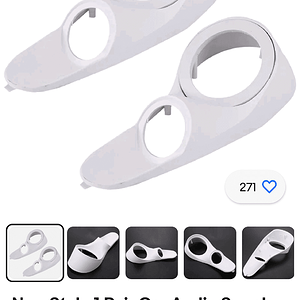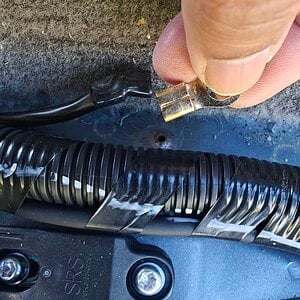ThxOne Premium Member
The Boss
I am trying to make sense of it all. I can't seem to get the answers I am looking for or perhaps I am just asking the wrong questions. Basically I am trying to find out what the output of each speaker should be in relation to the next type of speaker. Like say if my midrange outputs 100db of sound... should my tweeter also put out 100db of sound... my sub as well? You follow what I am asking? Should all speakers outputs be the same (before EQing). Below are 4 speakers, 3 of which I have. My US Acoustics amp is 100 x 4 rms @ 4ohms. This should be more than enough power to get the DB's past 110db per individual speaker. By adding a second speaker also getting the same amount of power as the first speaker will add +3db of output. Can anyone verify that I did this right. Every +3db takes double the power to achieve. I think a reasonable goal is 115db - 120db... which for a normal stereo is crazy loud.
The first DB listed for each speaker is its rated sensitivity by the manufacturer. Looking at the power vs DB's for each speaker makes sense now why you'd want to keep them withing a few DB's sensitivity of each other (mids vs tweeters). As an example the Dayton mids would be a better match to the Dayton tweeters than my Silverflutes. Cabin gain should help the sub out with the lack of power... at least a little bit... right?
Dayton Ti Tweet 40w rms / 80w max with correct crossover
Sens. in DB vs Wattage
95.5db = 1w
98.5db = 2w
101.5db = 4w
104.5db = 8w
107.5db = 16w
110.5db = 32w
113.5db = 64w
116.5db = 128w
119.5db = 256w
Silverflute 6.5" Midwoofer 80w rms / max unknown - say 160w
Sens. in DB vs Wattage
91.5db = 1w
94.5db = 2w
97.5db = 4w
100.5db = 8w
103.5db = 16w
106.5db = 32w
109.5db = 64w
112.5db = 128w
115.5db = 256w
Dayton Audio PS65LP-4 40w rms / 80w max
Sens. in DB vs Wattage
99db = 1w
102db = 2w
105db = 4w
108db = 8w
111db = 16w
114db = 32w
117db = 64w
120db = 128w
123db = 256w
Punch P3D4 10" 500w rms / 1000w max
Sens. in DB vs Wattage
82db = 1w
85db = 2w
88db = 4w
91db = 8w
94db = 16w
97db = 32w
100db = 64w
103db = 128w
106db = 256w
109db = 512w
112db = 1024w
115db = 2048w
The first DB listed for each speaker is its rated sensitivity by the manufacturer. Looking at the power vs DB's for each speaker makes sense now why you'd want to keep them withing a few DB's sensitivity of each other (mids vs tweeters). As an example the Dayton mids would be a better match to the Dayton tweeters than my Silverflutes. Cabin gain should help the sub out with the lack of power... at least a little bit... right?
Dayton Ti Tweet 40w rms / 80w max with correct crossover
Sens. in DB vs Wattage
95.5db = 1w
98.5db = 2w
101.5db = 4w
104.5db = 8w
107.5db = 16w
110.5db = 32w
113.5db = 64w
116.5db = 128w
119.5db = 256w
Silverflute 6.5" Midwoofer 80w rms / max unknown - say 160w
Sens. in DB vs Wattage
91.5db = 1w
94.5db = 2w
97.5db = 4w
100.5db = 8w
103.5db = 16w
106.5db = 32w
109.5db = 64w
112.5db = 128w
115.5db = 256w
Dayton Audio PS65LP-4 40w rms / 80w max
Sens. in DB vs Wattage
99db = 1w
102db = 2w
105db = 4w
108db = 8w
111db = 16w
114db = 32w
117db = 64w
120db = 128w
123db = 256w
Punch P3D4 10" 500w rms / 1000w max
Sens. in DB vs Wattage
82db = 1w
85db = 2w
88db = 4w
91db = 8w
94db = 16w
97db = 32w
100db = 64w
103db = 128w
106db = 256w
109db = 512w
112db = 1024w
115db = 2048w
Last edited:


